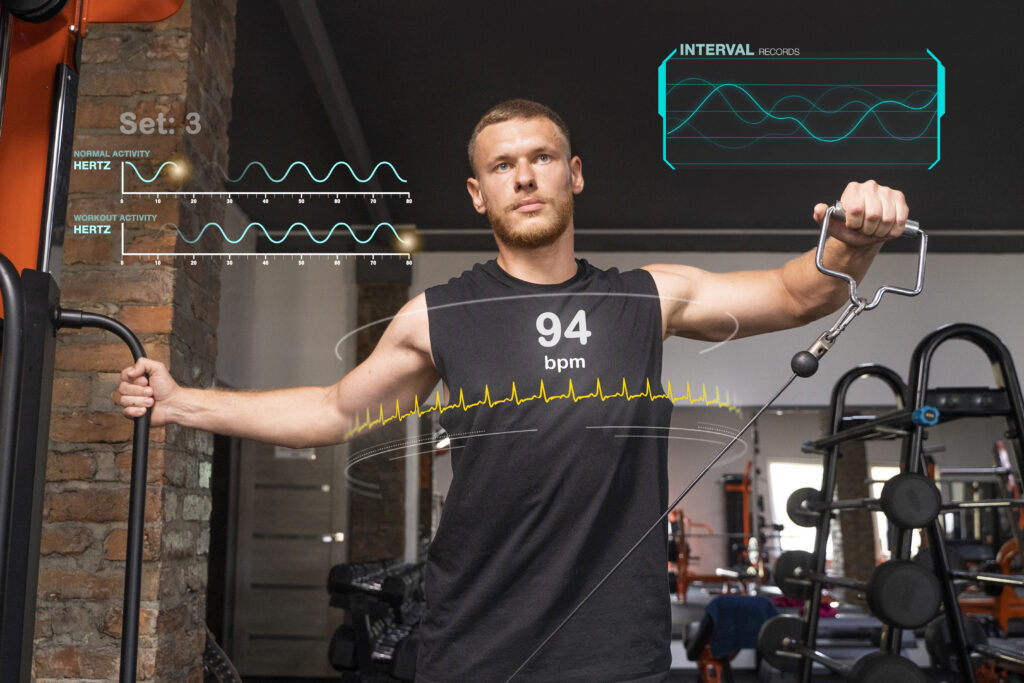The strength training world has entered a new era. Wearable technology—once reserved for step counting and sleep tracking—is now transforming how we train, recover, and optimize performance in the gym. Whether you’re a seasoned lifter or new to resistance training, integrating wearables into your workout routine can unlock deeper insights and improve your results. For users of the Jefit app, wearable tech offers an exciting way to level up your fitness tracking and programming.
What is Wearable Tech in Strength Training?
Wearable tech refers to devices worn on the body that collect and analyze physiological data in real-time. While fitness trackers and smartwatches are the most common, the field has expanded to include heart rate monitors, electromyography (EMG) sensors, velocity-based training (VBT) devices, and even smart clothing. These tools provide a new dimension of feedback beyond reps and sets—tracking biometrics like heart rate variability (HRV), bar speed, muscle fatigue, and movement quality.
1. Smartwatches and Fitness Trackers: More Than Just Step Counters
Popular devices like the Apple Watch, Garmin, Whoop, and Oura Ring have evolved to serve serious lifters. These wearables track heart rate zones, recovery scores, and sleep quality—all crucial for optimizing training. For example, monitoring HRV can indicate whether you’re recovered enough for a high-intensity lifting session or if your body needs more rest.
Apps like Jefit can sync with many of these devices, allowing you to track volume, rest periods, and workout duration while cross-referencing recovery data to better structure your training week.
2. EMG Sensors and Muscle Activation Feedback
Electromyography (EMG) wearables, like those from Strive or Moxy Monitor, give detailed data on muscle activation during each rep. This can help lifters assess whether they are targeting the intended muscle group and adjusting their form accordingly. It also enables real-time correction during workouts, leading to better neuromuscular efficiency and strength development.
EMG feedback is especially useful during accessory or rehab exercises where activation is key to success and injury prevention.
3. Velocity-Based Training (VBT) Devices
VBT tech like Tendo Units and Vitruve track barbell speed to measure power output and fatigue. These devices are popular in elite training environments and are increasingly accessible to individual gym-goers. When bar speed slows significantly, it signals neural fatigue—suggesting it’s time to stop a set or reduce volume.
Pairing VBT feedback with your Jefit training log allows for auto-regulated strength training where load and volume are adjusted based on real-time performance rather than a fixed plan.
4. The Jefit Advantage: Sync, Track, and Optimize
Jefit is already the go-to strength training tracker for millions of users. With wearable integration capabilities, users can combine the app’s powerful tracking features with biofeedback data from devices. For instance:
- Sync wearable-reported rest times and HR zones
- Monitor recovery metrics to decide training intensity
- Customize strength training programs based on individual needs
By bridging tech and training, Jefit offers a smarter, more personalized strength training experience.

The Future of Tech-Driven Training
As wearable tech becomes more advanced, expect even more precise feedback, AI-driven suggestions and coaching, and real-time corrections. The combination of data from smart devices and intelligent workout apps like Jefit represents the future of fitness: one where technology and training go hand in hand.
For lifters who want to train smarter, prevent injuries, and make gains more efficiently, wearable tech isn’t just a trend—it’s a game-changer.
Jefit: Your Ultimate Strength Training Companion
If you’re committed to building muscle, gaining strength, and tracking your progress effectively in 2025, the Jefit strength training app is the essential tool to help you crush your fitness goals. With over 20 million downloads and 12+ million active users, Jefit ranks among the best strength training apps available today. Named the Best Fitness App of 2024 and featured in Men’s Health, PC Magazine, and USA TODAY, Jefit combines expert-built workout programs, advanced gym performance tracking, and a supportive community to help you stay accountable and motivated. Whether you’re looking to follow a scientifically-backed muscle-building plan, monitor your lifting progress, or optimize your training intensity, Jefit gives you everything you need — all in one place.
References
- Halperin, I. (2020). Velocity-Based Training: From Theory to Application. Strength and Conditioning Journal.
- Sands, W. A., et al. (2016). Monitoring the Training Process: Advances in EMG Use in Strength Training. Sports Biomechanics.
- WHOOP & HRV for Strength Athletes. (2024). WHOOP.com
- Why Lifters Choose JEFIT App for Real Strength Gains - December 3, 2025
- Nutrition Trends Bodybuilders are Talking About in 2025 - November 26, 2025
- Smart Strength Training Backed by Jefit Data - November 19, 2025
